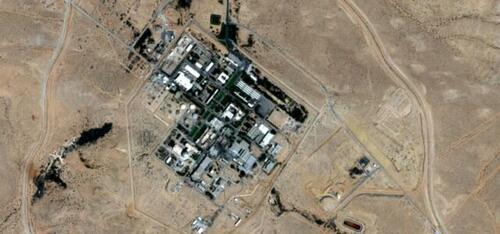
“We have not observed indications that Israel intends to use a nuclear weapon.” That sentence is the concluding line from an allegedly leaked (or hacked) U.S. intelligence document posted online this week and later reported on by Axios, CNN, and other outlets.
As Axios reported on Saturday, “U.S. officials are extremely concerned about a potentially major security breach after two alleged U.S. intelligence documents about Israel’s preparations for an attack on Iran were published by a Telegram account affiliated with Iran.”
The Associated Press and independent investigative journalist Ken Klippenstein both cited government sources who said the documents appeared to be authentic. While U.S. officials have yet to comment publicly on the material, reporting confirmed an investigation into their authenticity and how they came to be in the public domain was underway.
Since a barrage of missile strikes aimed at military targets in Israel by Iran on Oct 1, a retaliatory strike in response to Israel’s assassination of Hezbollah leader Hassan Nasrallah and other attacks, the world has been waiting for Israel’s promised military response.
Assuming the documents are authentic, what they show is that U.S. intelligence—as is well known and despite being close allies—keeps a close and clandestine eye on Israeli military operations.
CNN cited an unnamed U.S. official who called the documents being made public “deeply concerning,” though the outlet did not publish the documents in full. The documents, according to CNN,
are marked top secret and have markings indicating they are meant to be seen only by the US and its “Five Eyes” allies — Australia, Canada, New Zealand and the United Kingdom.
They describe preparations Israel appears to be making for a strike against Iran. One of the documents, which says it was compiled by the National Geospatial-Intelligence Agency, says the plans involve Israel moving munitions around.
Another document says it is sourced to the National Security Agency and outlines Israeli air force exercises involving air-to-surface missiles, also believed to be in preparation for a strike on Iran. CNN is not quoting directly from or showing the documents.
NEW: A set of classified U.S. intelligence documents purporting to show information about Israel’s plans to strike in Iran have been confirmed as authentic in a report by CNN (https://t.co/8AVOexA1Y8).
Drop Site News has also been reviewing these documents since they were posted… pic.twitter.com/VKOEq9qcbo
— Drop Site (@DropSiteNews) October 19, 2024
It has long been known that Israel has a nuclear weapons program and maintains a nuclear arsenal, but it remains both Israeli and U.S. government policy never to acknowledge or confirm the existence of either. In one of the documents, the U.S. specifically references Israel’s ability to deploy a nuclear weapon, though it categorizes the threat of doing so in this case as low.
Independent journalist Ken Klippenstein, recently banned from X for posting an internal opposition research dossier that the Trump campaign had compiled on JD Vance, posted images of both documents to his substack page, as he excoriated major outlets for refusing to do.
“As with the J.D. Vance Dossier, which the entire media knew about but refused to publish, it appears the media has once again lost its nerve – and its sense of what’s news,” Klippenstein wrote.
According to Klippenstein’s assessment:
The intelligence report includes a rundown of the various aspects of Israeli military activities that the U.S. is monitoring to inform its judgments and conclusions: weapons handling, air defense, ground forces, Navy, Air, Special Forces, and even Israel’s Nuclear Forces. But even then, only the weapons handling and special forces categories are identified as having a “medium” predictive ability in regards to determining Israel’s action; the rest are designated “low” predictive ability.
The second intelligence report is titled “Israel: Air Force Continues Preparations for Strike on Iran and Conducts a Second Large-Force Employment Exercise.” The document details Israeli activities during an evident “mission rehearsal” (in U.S. lingo) that could be indicative of how Israel will strike Iran. Citing imagery analysis and other sources, the NGA report notes that the Israeli Air Force is already conducting covert drone operations over Iran (evidently doing its own spying), and how, as part of Israeli Air Force activity, has been handling air-launched ballistic missiles and other weapons.
From the leaked US intel documents: “we did not observe any Jericho II medium-range ballistic missiles … we have not observed any indications that Israel intends to use a nuclear weapon”. Notice the NF – no foreigners – marking for that paragraph. https://t.co/Bkfq9KtWew pic.twitter.com/YE9IFKN301
— Shashank Joshi (@shashj) October 20, 2024
Defending release of the full documents, he explained that both provide “insight of enormous public interest as we stand at the precipice of a broader conflict” and contained “information that directly bears upon U.S. obligations and actions. It is for that reason that I’ve decided to publish the basic documents.”
Loading…
Originally Posted at; https://www.zerohedge.com//
Stay Updated with news.freeptomaineradio.com’s Daily Newsletter
Stay informed! Subscribe to our daily newsletter to receive updates on our latest blog posts directly in your inbox. Don’t let important information get buried by big tech.
Current subscribers:






